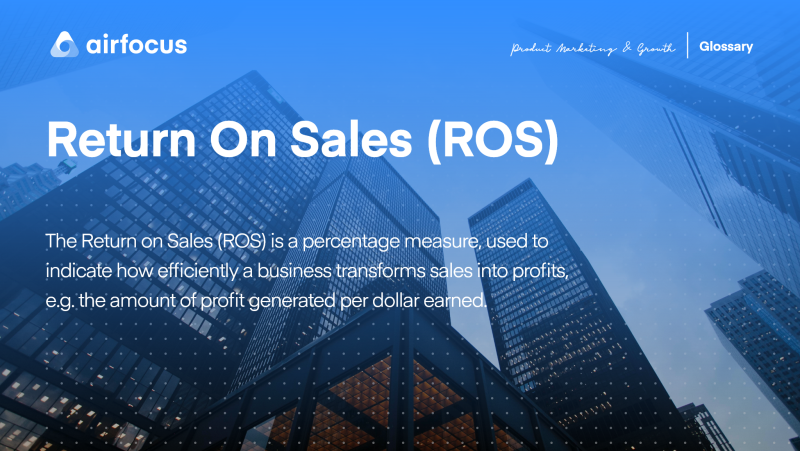Return on Sales (ROS)
What is Return On Sales (ROS)
Definition Return On Sales (ROS)
The Return on Sales (ROS) is a percentage measure, used to indicate how efficiently a business transforms sales into profits, e.g. the amount of profit generated per dollar earned.
If a company’s ROS is on the rise, this signals growth at a steady efficient rate. Diminishing ROS, however, may indicate serious financial difficulties. Increasing sales can help improve Return on Sales, though this could require an overhaul of current strategies.
How to Calculate Return on Sales
Companies can calculate their Return on Sales by dividing the operating profit — before taxes and interest are deducted — by the net sales, across a chosen period.
For example: let’s say your software company makes $900,000 in sales but incurs $725,000 in expenses. What is your operating profit? In this case, it’s $175,000.
Next, you divide the profit by the sales figure to get your ROS. 0.194.
Multiply this by 100 to convert this figure to a percentage, and you have 19%. A very healthy ROS indeed! Many organizations would be content with a 5-10% Return on Sales.
Once a business has calculated its ROS, it can determine how cost-effective it is in delivering products to the market.
How to Use Return on Sales
Companies should aim to reduce costs and boost revenue through continuous improvement. If a business earns $50,000 in sales but takes $35,000 to do so, its overall efficiency is much lower than it should be.
For businesses failing to hit a satisfactory ROS, managers can work on reducing expenses while keeping revenue the same or taking it higher without incurring further costs. Alternatively, they can boost sales at the same time as moderately increasing costs as required.
Finding a comfortable balance is key.

General FAQ

Glossary categories
Experience the new way of doing product management

Experience the new way of doing product management








